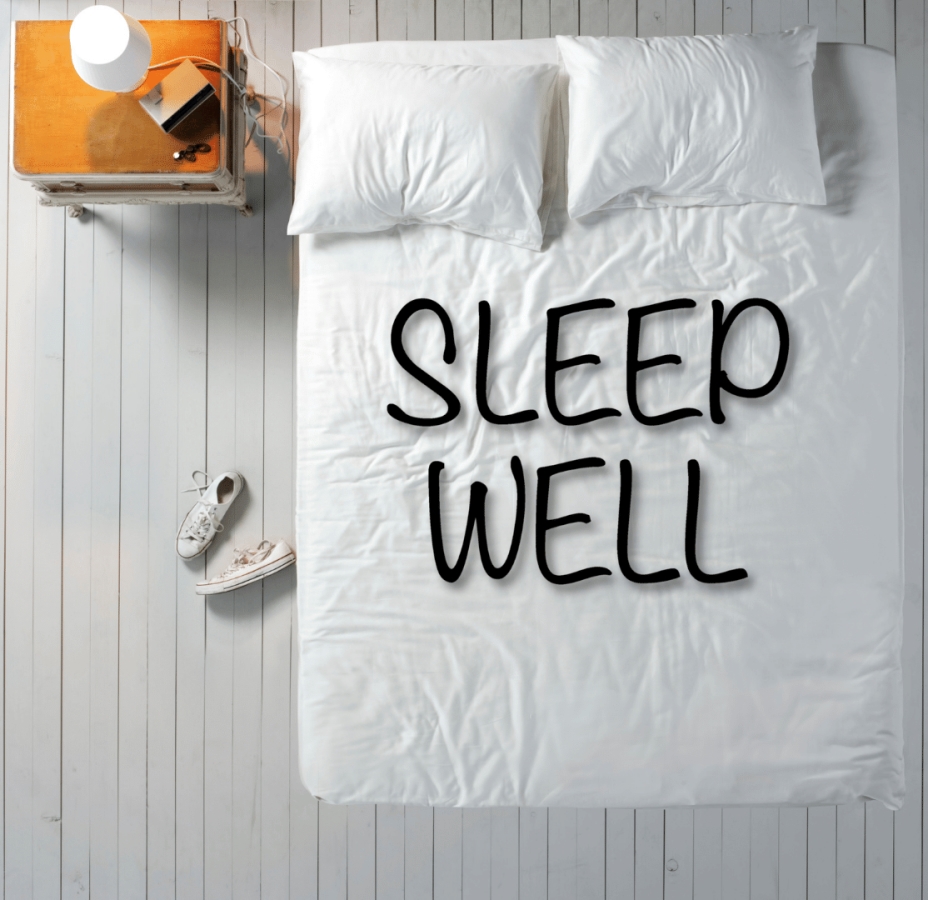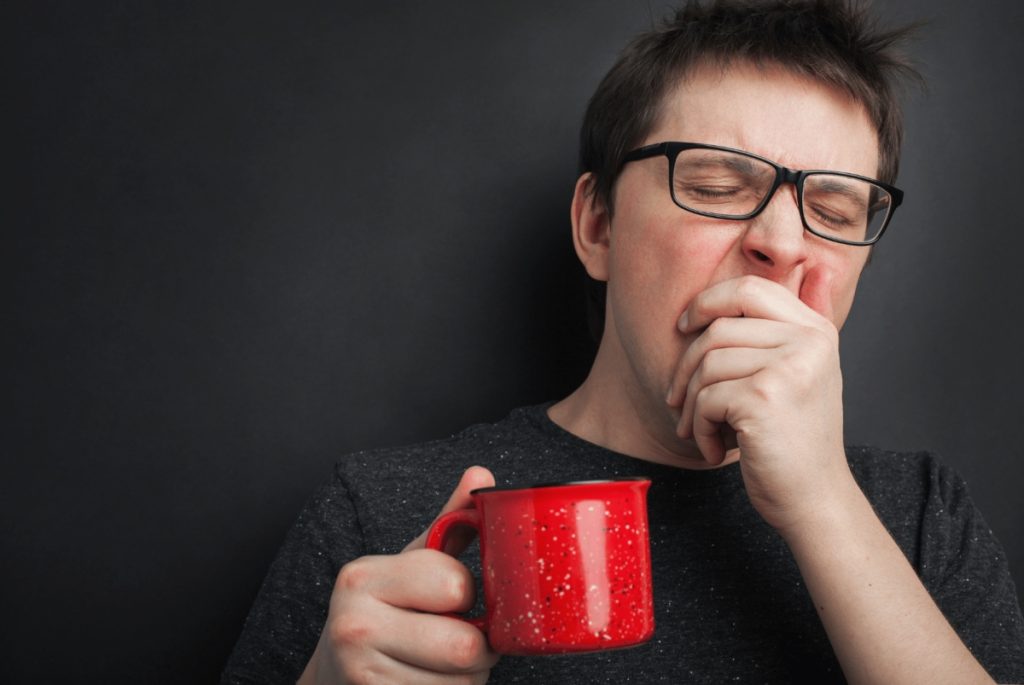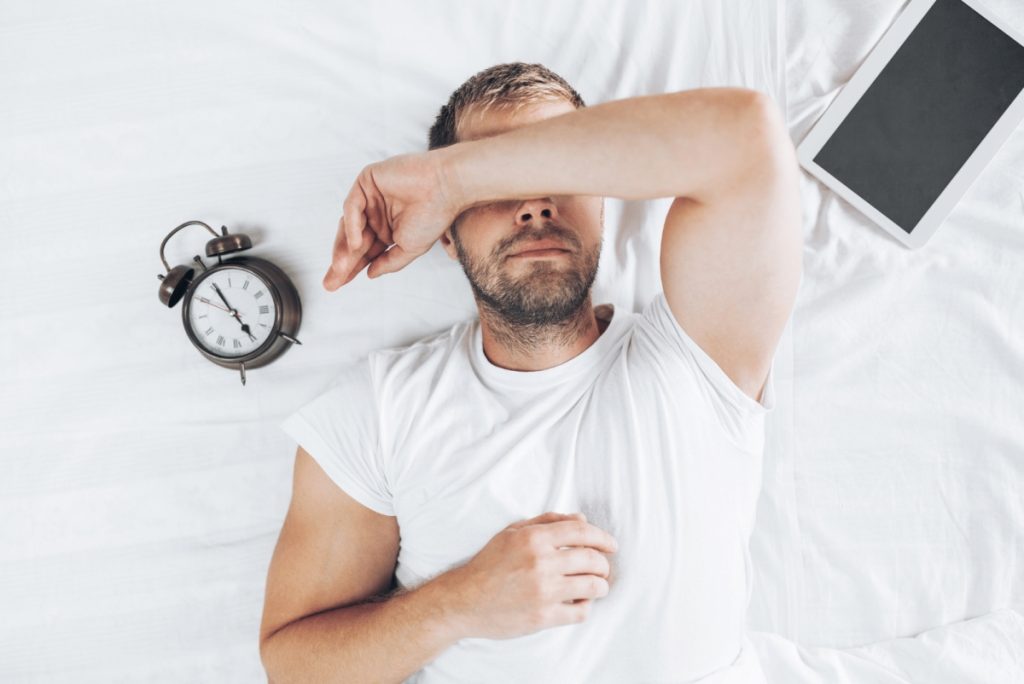
Sleep Pressure And Homeostatic Sleep Drive: What Makes You Sleepy And Why It Matters To Optimize Sleep


Sleep Pressure And Homeostatic Sleep Drive: What Makes You Sleepy And Why It Matters To Optimize Sleep
What Is Sleep Pressure Or Homeostatic Sleep Drive?
Our bodies rely on it to track how long we’ve been awake and tell us when it’s time to sleep.
The following factors influence our sleep pressure:
- Metabolic waste and byproducts
- Inflammatory proteins that naturally ebb and flow each day in our bodies
- Sleep quality
- Sleep deprivation
Other biological processes in your body also regulate sleep-wake cycles, such as your circadian rhythm or internal biological clock. This clock regulates our sleep-wake cycles and other signaling molecules that affect sleep.
While awake, our bodies build up normal metabolic waste, byproducts, and inflammatory proteins. These molecules are your sleep drive–they tell your brain to feel tired and sleepy. They also help you achieve the deepest and most restorative sleep.
Overnight, sleeping resets your sleep drive by clearing out toxic waste products built up during the day. This is why you feel refreshed and energized after a good night’s sleep. So, the next time you feel sleepy, you can thank your homeostatic sleep drive for reminding you to rest.
Adenosine
Adenosine is a molecule your cells produce as they burn ATP for energy. Caffeine improves wakefulness and reduces fatigue mainly by blocking your adenosine receptors. However, caffeine doesn’t block other sleep drive molecules, so it’s possible to still feel tired even after you’ve had coffee.
Adenosine plays a key role in promoting sleep. Adenosine gradually accumulates in the brain as you stay awake and use energy. Adenosine then binds to several types of receptors present in the brain and spinal cord.
Each receptor plays a different role in sleep regulation:
- A1 receptor inhibits glutamate neurons, decreasing arousal and increasing sleepiness. A1 receptors are found in the basal forebrain. This region regulates wakefulness and sleep.
- A2A receptors activate GABA neurons in the median preoptic nucleus (MnPN) and the ventrolateral preoptic area (VLPO) of the brain. GABA neurons inhibit brain activity, decreasing arousal and increasing sleepiness.
- A2B and A3 receptors are also implicated in sleep regulation, but their specific roles are poorly understood.

As adenosine levels build up, overall brain activity decreases and makes you feel drowsy. This is why you tend to feel more tired and sleepy the longer you stay awake.
Sleeping reduces adenosine levels. During sleep, the body can clear adenosine, toxic waste, and other products from the brain and other tissues. As a result, you feel more alert and refreshed upon waking up.
Oxidized Glutathione
Glutathione is a naturally produced antioxidant found in all cells of the body. Low levels of glutathione indicate high-stress states in the body. Glutathione exists in two forms in cells:
- Reduced glutathione (GSH): Glutathione ready to neutralize oxidative stress
- Oxidized glutathione (GSSG): Glutathione that has been depleted to fight oxidative stress
During wakefulness, adenosine levels in the brain increase, leading to an increase in the production of GSSG. GSSG is then exported from the brain into the blood, where it can be measured as a biomarker of wakefulness.
As sleep occurs, adenosine levels decrease, and GSSG levels also decrease. This reduction in GSSG levels reflects the restoration of oxidative balance in the brain during sleep. GSSG can indicate your sleep needs and a regulator of oxidative balance in the brain.
Inflammatory Cytokines
Inflammatory cytokines are signaling molecules that control the body’s immune response. Cytokines are produced by immune cells, such as macrophages and T cells.
Inflammatory cytokines also play a role in sleep regulation. One cytokine, interleukin-1 (IL-1), promotes sleep by releasing other sleep-promoting molecules.
These sleep-promoting chemicals regulate the sleep-wake cycle by:
- Increasing sleep pressure
- Promoting the transition from wakefulness to sleep
- Enhancing sleep quality
Here’s how each of these chemicals play a role in sleep:
- Prostaglandin D2 (PGD2) is a lipid (fat) molecule in the brain that increases sleep pressure. PGD2 regulates non-rapid eye movement (NREM) sleep.
- Brain-derived neurotrophic factor (BDNF) is a protein that promotes nerve growth and survival. Chronic sleep deprivation reduces BDNF, which can affect brain and mental health.
- Tumor necrosis factor-alpha (TNF-α) is another cytokine involved in the body’s immune response. TNF-α promotes slow-wave sleep, a stage of deep sleep that is important for physical and mental restoration.
During infection or inflammation, inflammatory cytokines strengthen the homeostatic sleep drive. This leads to increased feelings of sleepiness and a greater need for sleep and healing. You may also naturally get more healing deep sleep during this time.
Why Does Sleep Drive Matter?
Adenosine, oxidative stress, and inflammation may have a bad rap, but you actually need them to sleep. Without enough sleep drive, you may struggle to fall asleep or achieve all the restorative stages of sleep. Unfortunately, you could be doing many things that lead to suboptimal sleep drive, which can cause suboptimal sleep.
Your sleep drive is essential for the body’s natural mechanism for regulating sleep. It reflects the body’s need for sleep and ensures enough rest to recover from physical and mental exertion. Sleep drive affects:
- Physical health: Sleep helps to regulate the immune system, promote healing, and restore the body’s energy levels.
- Mental health: Sleep regulates mood, reduces stress, and improves cognitive function. Sleep deprivation is linked to various mental health problems, including anxiety and depression.
- Performance: Sleep improves concentration, memory, and decision-making. These are essential for success in school, work, and other areas of life.
- Safety: Sleep deprivation can also increase the risk of accidents and injuries. It can impair reaction times, motor coordination, and judgment, making it more difficult to perform tasks safely.
Things That Reduce Sleep Drive
Certain chemicals and habits can disrupt your sleep drive.
Coffee, antioxidants, or anti-inflammatories late in the day can throw off your sleep drive molecules. These can make it hard to fall asleep or lead to suboptimal sleep.
Other factors that reduce the homeostatic sleep drive include stimulant consumption, stress and anxiety, and certain medications. Developing healthy sleep habits and avoiding these factors is important to promote a healthy sleep schedule and maintain optimal health and well-being.
Caffeine And Other Stimulants

Caffeine reduces homeostatic sleep drive by blocking A2A adenosine receptors. So, adenosine can’t bind to the receptors. This can reduce sleepiness and sleep depth.
Many stimulants also reduce sleep drive by:
- Increasing dopamine
- Increasing norepinephrine
- Decreasing adenosine release
Dopamine and norepinephrine are neurotransmitters that promote wakefulness.
Regularly using these medications leads to chronic sleep deprivation. This negatively affects cognitive functioning and overall health.
Antioxidants And Anti-Inflammatories Too Late In The Day
Antioxidants are substances that protect the body from free radicals. Free radicals are unstable molecules that damage cells and contribute to chronic diseases.
While antioxidants are generally beneficial for health, they may reduce sleep drive if taken in high doses late in the day. One antioxidant, vitamin C, reduces adenosine accumulation.
Vitamin C
Vitamin C is a powerful antioxidant that protects cells from oxidative stress. Vitamin C enhances the activity of certain enzymes, leading to a rapid breakdown of adenosine and a reduction in its accumulation in the brain. These enzymes include:
- Adenosine deaminase catalyzes the conversion of adenosine to inosine. Inosine is then broken down into hypoxanthine and xanthine, which are then excreted through urination. Vitamin C enhances the activity of adenosine deaminase in various tissues, including:
- Brain
- Liver
- Kidneys
- 5′-nucleotidase catalyzes the conversion of adenosine monophosphate (AMP) to adenosine. Adenosine is then broken down by adenosine deaminase. Vitamin C enhances the activity of 5′-nucleotidase in the brain, increasing wakefulness.
Anti-Inflammatory Medications
Taking anti-inflammatories too late in the day decreases the sleep drive in a couple of ways:
- Prostaglandin production impairment: Anti-inflammatory medications, particularly NSAIDs (ibuprofen), interfere with the production of prostaglandins. Prostaglandins promote sleep by inhibiting the activity of wake-promoting neurons in the brain. When prostaglandin production decreases, these wake-promoting neurons become more active, leading to difficulty falling or staying asleep.
- Dosage effects: Some NSAIDs remain active in the body even after several hours. Prolonged activity disrupts the body’s natural sleep-wake cycle.
Some people can sleep just fine while taking NSAIDs or anti-inflammatory supplements, while others find that these disrupt their sleep. If you need anti-inflammatory medications for a medical condition, it’s important to talk to your healthcare provider about the best time to take them to minimize their effects on your sleep.
Naps And Sleeping In
Naps or sleeping in late can contribute to reduced sleep drive in several ways.
- Less time spent awake during the day reduces the time for adenosine to accumulate in the brain and gives less time for sleepiness to build up.
- Napping or sleeping late creates a mismatch between the internal biological clock and the external environment. This mismatch reduces both melatonin production and sleep drive molecules. When both are low, you may find it harder to sleep at night.
Chronic sleep deprivation or consistent poor sleep quality can negatively affect physical and mental health. Therefore, it is important to prioritize good sleep habits and maintain a consistent sleep schedule as much as possible. That said, many people find naps very beneficial, especially for their cognitive performance. If you have to nap, keeping it short (<30 minutes) and early in the day can minimize its impact on your sleep drive at your bedtime.

How To Boost Sleep Drive At Night
Exercise during the day can increase sleep drive by increasing oxidative stress and the good type of inflammation. Exercise has the following effects:
- Increases adenosine and oxidative stress production
- Temporarily increases inflammation, although it has net anti-inflammatory effects in the long term.
- Increases body temperature. Your body relaxes and feels more rested as it cools down after exercise.
- Promotes overall health and well-being. Exercise improves cardiovascular health and promotes better mental health, all of which positively affect sleep quality.
The timing and intensity of exercise play a role in sleep drive. Exercising too close to bedtime or engaging in intense exercise late in the day may interfere with sleep, so finding a balance that works for your individual needs and preferences is important.
While any exercise can potentially improve sleep drive, aerobic exercise is particularly effective. Examples include running, cycling, swimming, and brisk walking.
Regular aerobic exercise increases the time spent in deep sleep, which is sleep’s most restorative and healing stage. Aerobic exercise also reduces symptoms of insomnia and improves overall sleep efficiency.
Sun Exposure
Aside from helping regulate circadian rhythm, sun exposure during the day can also improve sleep drive by increasing oxidative stress and adenosine levels.
Hot Or Cold Therapy
Hot and cold therapy are hormeses, or small doses of stress that make you stronger. They boost sleep pressure by creating small amounts of oxidative stress in your body in the short term. But in the long term, they modulate oxidative stress and inflammation by improving your body’s ability to counteract these. At the same time, the changes in body temperature can also reinforce your circadian cues for day-night cycles and promote relaxation responses.
Conclusion:
Aside from maximizing correct circadian rhythm cues, you want to optimize your homeostatic sleep drive to sleep restoratively every night. Try these tips and if there is still room to improve your sleep quality, check out our sleep bundle.
References
- Deboer T. Sleep homeostasis and the circadian clock: Do the circadian pacemaker and the sleep homeostat influence each other’s functioning? Neurobiol Sleep Circadian Rhythms. 2018;5:68-77. doi:10.1016/j.nbscr.2018.02.003
- Xie L, Kang H, Xu Q, et al. Sleep drives metabolite clearance from the adult brain. Science. 2013;342(6156):373-377. doi:10.1126/science.1241224
- Basheer R, Strecker RE, Thakkar MM, McCarley RW. Adenosine and sleep–wake regulation. Prog Neurobiol. 2004;73(6):379-396. doi:10.1016/j.pneurobio.2004.06.004
- Trivedi MS, Holger D, Bui AT, Craddock TJA, Tartar JL. Short-term sleep deprivation leads to decreased systemic redox metabolites and altered epigenetic status. PLoS One. 2017;12(7):e0181978. doi:10.1371/journal.pone.0181978
- Jewett KA, Krueger JM. Humoral sleep regulation; interleukin-1 and tumor necrosis factor. Vitam Horm. 2012;89:241-257. doi:10.1016/B978-0-12-394623-2.00013-5
- Urade Y, Hayaishi O. Prostaglandin D2 and sleep/wake regulation. Sleep Med Rev. 2011;15(6):411-418. doi:10.1016/j.smrv.2011.08.003
- Schmitt K, Holsboer-Trachsler E, Eckert A. BDNF in sleep, insomnia, and sleep deprivation. Ann Med. 2016;48(1-2):42-51. doi:10.3109/07853890.2015.1131327
- Lazarus M, Shen HY, Cherasse Y, et al. Arousal effect of caffeine depends on adenosine A2A receptors in the shell of the nucleus accumbens. J Neurosci. 2011;31(27):10067-10075. doi:10.1523/JNEUROSCI.6730-10.2011
- Otocka-Kmiecik A, Król A. The role of vitamin C in two distinct physiological states: Physical activity and sleep. Nutrients. 2020;12(12):3908. doi:10.3390/nu12123908
- Kirkwood JS, Lebold KM, Miranda CL, et al. Vitamin C deficiency activates the purine nucleotide cycle in zebrafish. J Biol Chem. 2012;287(6):3833-3841. doi:10.1074/jbc.M111.316018
- Gunaydin C, Bilge SS. Effects of nonsteroidal anti-inflammatory drugs at the molecular level. Eurasian J Med. 2018;50(2):116-121. doi:10.5152/eurasianjmed.2018.0010
- Kline CE. The bidirectional relationship between exercise and sleep: Implications for exercise adherence and sleep improvement: Implications for exercise adherence and sleep improvement. Am J Lifestyle Med. 2014;8(6):375-379. doi:10.1177/1559827614544437
- Choi JH, Lee B, Lee JY, et al. Relationship between sleep duration, sun exposure, and serum 25-hydroxyvitamin D status: A cross-sectional study. Sci Rep. 2020;10(1):4168. doi:10.1038/s41598-020-61061-8
- Ribelayga C, Mangel SC. A circadian clock and light/dark adaptation differentially regulate adenosine in the mammalian retina. J Neurosci. 2005;25(1):215-222. doi:10.1523/JNEUROSCI.3138-04.2005
